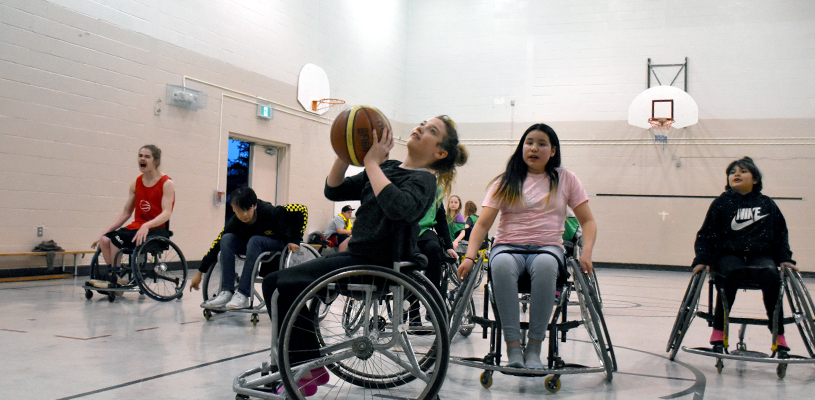Roadmap to municipal accessibility

How Regina is transforming into a welcoming city to all
Sponsored by Rick Hansen Foundation
Creating an accessible municipality is a journey. And as with most journeys, a roadmap is a valuable tool for avoiding detours. The destination for Regina, Saskatchewan is a city that is welcoming to all.
Accessibility Certification
Forty-one public-facing buildings will be rated for accessibility using Rick Hansen Foundation Accessibility Certification (RHFAC), a national rating and recognition system. Using a universal design lens, it provides a roadmap for accessibility in the built environment. It also recognizes commitment to inclusion through certification.
For Regina, RHFAC has equipped staff with knowledge about accessibility as it applies to those with mobility, vision, and hearing disabilities.
“Going in, we had an idea of some of the accessibility features we needed,” said Hayley Schnell, consultant for community well-being and inclusion for the City of Regina. “We expected to be told we need to put a push bar here or a lower a sink there. But RHFAC ratings pointed out these really great additions that we had not thought of. Because if you don’t have the lived experience of using a wheelchair or living with another disability, you’re going to miss things.”
Prioritizing Accessibility and Inclusion
Part of the challenge for Regina is the age of the city’s buildings. Many were built 20-plus years ago when accessibility requirements were different from today. Accessibility is a multi-faceted consideration for the city. One goal is to update their buildings so that they incorporate modern accessibility features. Another is that the recreation programs themselves must be inclusive. This includes engaging the disability community.
The city facilitated 20 focus groups to get their input on what constitutes as meaningful change. They shared the results with council in an October 2021 preliminary report. The next step was conducting a public survey to build on this knowledge and learn more about the needs of their residents.
A key to prioritizing accessibility is having a city council on board. Then accessibility can be budgeted for rather than treated as an afterthought with costly retrofits.
“Rick Hansen Foundation gave us a guide and a framework of where we can push accessibility to,” added Schnell. “All we want is for people to feel welcome and comfortable and to be able to access these spaces.”
Start Your Accessibility Journey Now
RHFAC meets the Canadian benchmark by using a consistent approach to measuring accessibility from coast to coast to coast. It has been designed with input from people with disabilities, and provides a snapshot of meaningful accessibility.
“There’s not much point in having an automatic door opener if there isn’t enough space for a wheelchair user to get out of the way of the door as it swings open,” said Stanis Smith, architect and RHF Board Member. “This may seem obvious, but you’d be surprised how often it is forgotten.”
Let us help you on your accessibility journey. Learn more by visiting www.RickHansen.com/RHFAC.
Rebecca Blissett is the staff writer for the Rick Hansen Foundation, a Canadian organization dedicated to improving the lives of people with disabilities by creating an accessible and inclusive world.



